Greetings from Palmia Observatory
Well, this week we comment on the recent April APS meeting and other online presentations and published results. In addition, the forecast of sunspot activity, called for taking the flimsy tripod outside and looking at the sun.
Wow, yeah, this DSLR image with 300mm telephoto, shows some large sunspots!
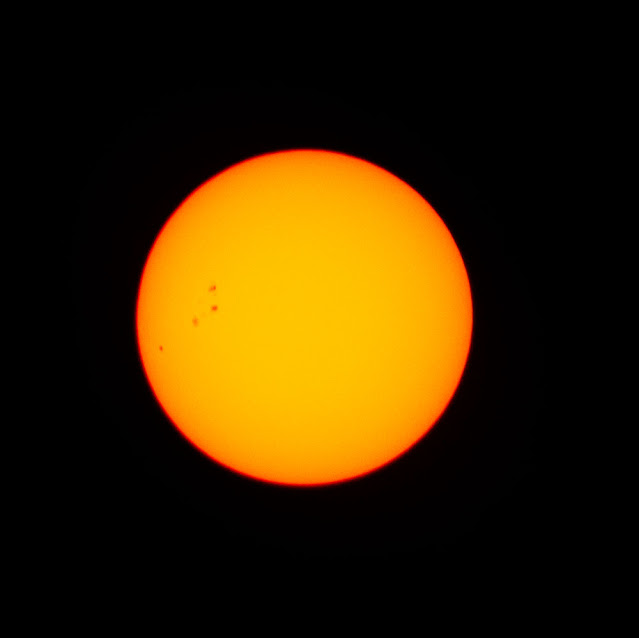 |
| Sunspot Activity, DSLR, 300mm, 1/250 second, April 20 (Source: Palmia Observatory) |
The APS April meeting has finally concluded and even though I reluctantly did not attend the meeting in person in NYC, the online version worked out fine. Rather than go over some of the technical presentations, one slide that impressed me was this one showing the ever increasing resolution of measurement of the Cosmic Microwave Background (CMB). Connemara Doran, Harvard, discussed this and how this higher resolution capability is finally getting to the point that finer measurement is getting to the point of being able to rule out some theoretical conjectures like Lorentz violation speed variation depending on polarization. It is still too early, but better measurements might be able to detect if some of these conjectures are valid or not.
 |
| Increasing resolution of CMB measurements (Source: APS April '22, Connemara Doran) |
You might want to check out the next AGU conference, AbSciCon22 on "Origins and Exploration: From Stars to Cells", conducted in person and online, from May 15-20. This looks like a very interesting conference and I signed up. If you are an older biological organism, like a retiree, you can sign up with a reduced fee structure. See you on line!
| Watch AGU Astrobiology Conference online, May 15-20 (Source: https://www.agu.org/AbSciCon) |
In other local university meetings, Nobel Prize Winner, Donna Strickland, made several presentations recently at CSULB and UCI on high intensity, short duration laser pulses. She did a lot of investigation of this topic while a graduate student and it solved a problem of how to generate higher and higher intensity laser pulses. A direct approach of just amplifying the pulses to higher and higher power levels did not work because of non-linear limiting factors in the laser cavity medium. Her approach around this problem was to first stretch the laser pulse out so that individual portions of the spectrum could be amplified separately and then recombine the components together again, which resulted in higher energy, short laser pulses. This Wikipedia screenshot illustrates the basic concept.
 |
| Chirped Pulse Amplification (Source: Wikipedia) |
Another online presentation by Marcos Santander, U. of Alabama, covered some of the new neutrino measurements from IceCube, as part of the STSci public lecture series.
 |
| Neutrino Astronomy: A New Window into the Extreme Universe (Source: Marcos Santander) |
Neutrino generation and the origin of cosmic rays might be tied together and the measurement and location of neutrinos on the sky can offer some insight. Neutrinos, unlike the charged cosmic ray particle, are not deflected by magnetic fields in the universe along the line of sight back to the source and so provide a more direct measurement of the origin. Neutrinos are affected by gravitational fields and lensing so they still are not perfect in pointing back to the source.
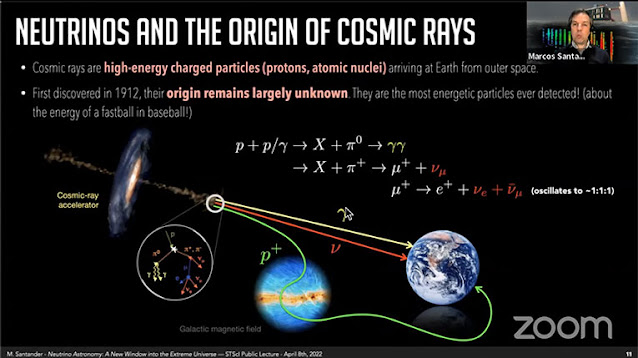 |
| Typical trajectories of neutrinos and cosmic rays (Source: Marcos Santander) |
In other physics news, the latest high-precision measurement of the W boson mass was published in the April 8, 2022 edition of Science. The article tells how the latest measurement differs from the mass predicted by the Standard Model and that the difference is something like 7 standard deviations away.
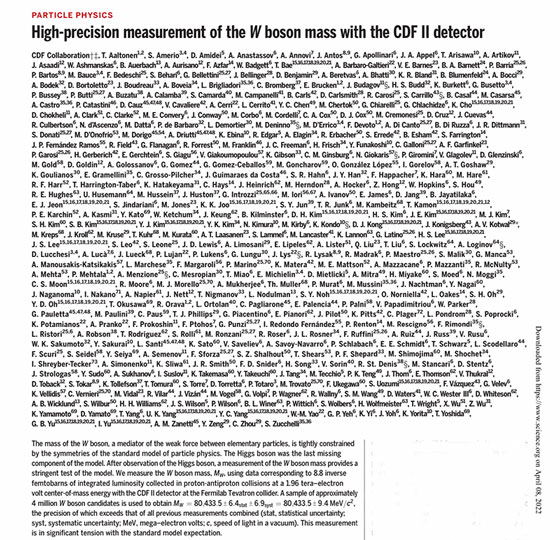 |
| How many scientists to weigh the W Boson? (Source: Science, April 8, 2020) |
So what does this latest estimate of the W boson mass mean? The new measurement is 80.443 GeV, while the standard model prediction is 80.357 GeV. Hmm, not much difference, but when the statistical analysis is done it shows that this is a very significant difference and if the measurement is validated, might indicate the need for new physics, maybe new particles or fields, in the Standard Model. This screenshot from Prof. Matt Strassler shows some of the online discussion.
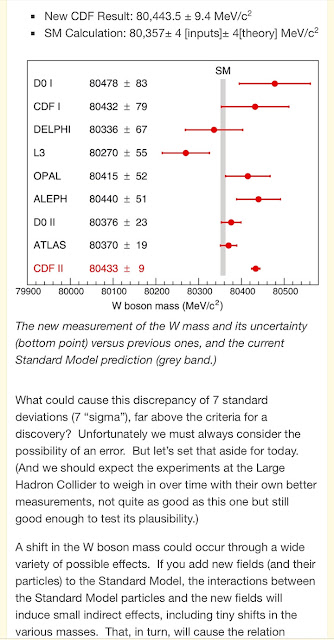 |
| W Boson measurement and discrepancy considerations (Source: Blog post from Prof. Matt Strassler) |
Finally, you don't have to have a large expensive laboratory to notice some strange patterns in he universe. Check out this pattern on the patio grounds at Palmia Observatory. In this first photo, you can see that many male pine cones have fallen on the outside patio floor and seem to be in a regular pattern of some sort. It is that time of the year when the large pine trees shed their small male pine cones as well as the larger more recognized pine cones.
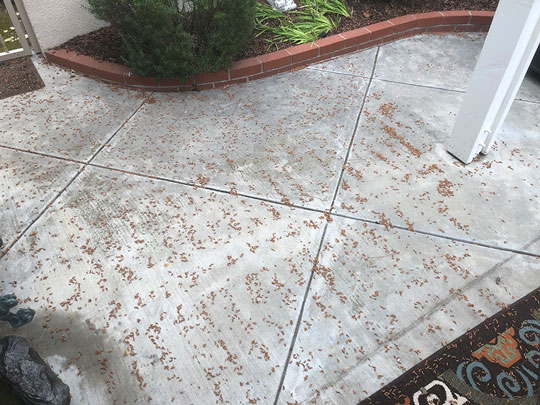 |
| Strange pattern on male pine cones on patio slab (Source: Palmia Observatory) |
Yes, the pine cones appear on the ground in distinct rows. Is this some sort of equivalent pattern as observed with quantum interference and the double slit experiment?
Looking at other areas on the patio don't show any such pattern. The male pine cones just seem to fall randomly from the nearby trees and don't show up in any pattern.
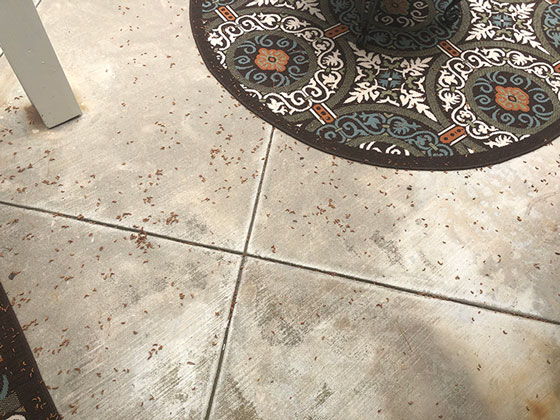 |
| No visible male pine cone pattern on another location of the patio (Source: Palmia Observatory) |
But wait, maybe something else is interfering with the falling pine cones? Yep, you are right, there is a patio cover with long slits. Hmm, no need for quantum interference here.
 |
| Ok, so maybe the patio cover is the source of the pattern (Source: Palmia Observatory) |
Until next time,

No comments:
Post a Comment